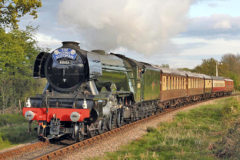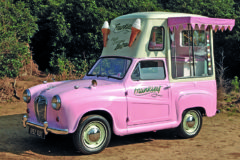MF 35/35X tractor buying guide
Posted by Chris Graham on 16th July 2022
Chris Graham champions the excellent MF 35/35X models; pretty, classic tractors that marked the end of an agricultural era
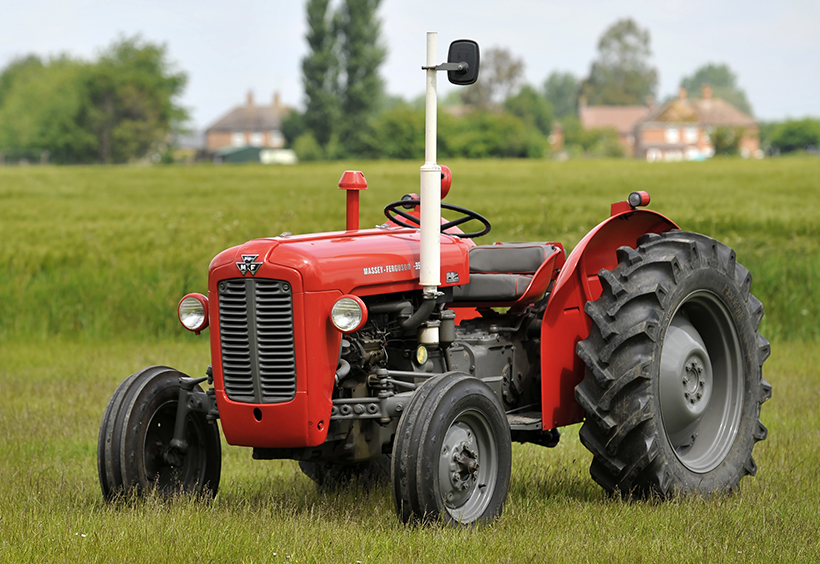
The MF 35/35X was the last of the curvaceous tractor designs from Massey Ferguson; it represented the end of an era.
While there’s ever-growing interest in the modern-looking, straight-edged styling of Massey Ferguson tractors from the 100 Series and beyond, it’s good to know that there are still many enthusiasts with plenty of time for the more curvaceous, earlier models. Machines such as the MF 35 hark back to a more traditional era of rural life, punctuated by harvest festivals, village cricket and Saturday night dances in the dusty village hall. Things were simpler in the years following the Second World War, life was lived at a slower pace as people settled back into their normal lives and, in some respects, the tractors of the period reflected that.
Nevertheless, manufacturers like Massey Ferguson fully appreciated the way things were heading, and could foresee the revolution that was set to transform agriculture over the coming decades. The arrival of its Red Giants range in the mid-1960s was to herald the start of a significant change in the way in which the British countryside was farmed. Fields were to get larger, implements became bigger and heavier and Massey Ferguson busied itself delivering the more powerful and weighty tractors that would enable farmers to boost productivity and efficiency.
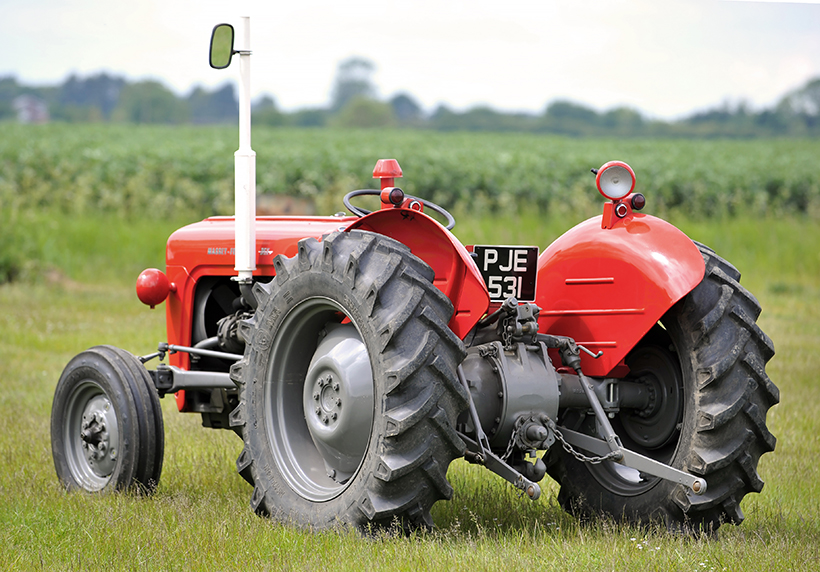
Massey Ferguson offered a good range of implements that could be bolted onto the back of the MF 35. This tractor has been with the same owner since the mid-1960s.
Tranquil times
So, in many respects, the 1950s and early ’60s offered a tranquil interlude for farming communities across the land. It was a time during which many were able to continue much as they had before the war. However, that period really did represent the calm before the revolutionary storm, and gave farmers a chance to catch their breath before the equipment and technique developments started coming thick and fast. This was the environment into which the MF 35 was launched.
To begin with, the new model – which arrived in 1956 – was essentially a re-painted FE 35; the grey and gold/bronze colour scheme being replaced with a red and metallic Flint Grey combination, which better reflected the partnership between Massey and Ferguson. Power continued to be supplied by Standard engines running on either petrol, TVO, diesel or lamp oil but, in 1959, Massey Ferguson bought the Peterborough-based engine manufacturer F Perkins, which is when things started to change.
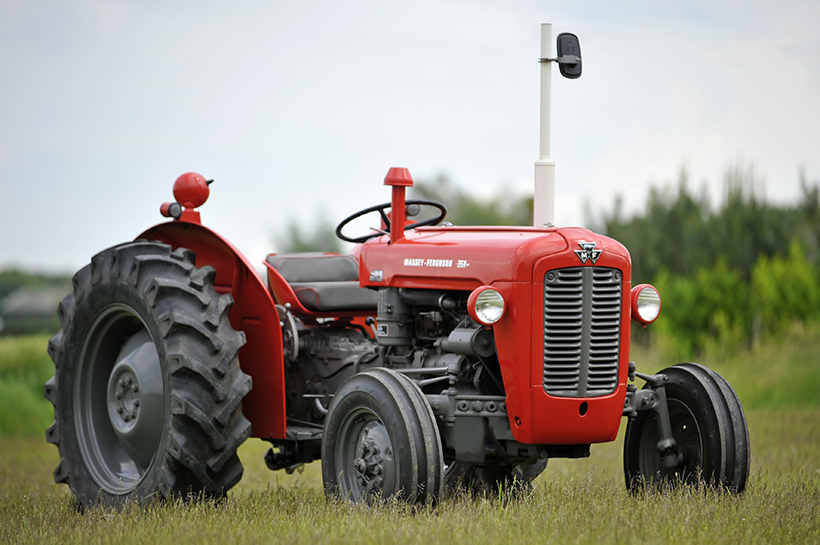
Note the safety mudguards that extend right down to the footplates, to provide maximum protection for the driver.
The three-cylinder Perkins A3.152 diesel engine was quickly introduced and, at about the same time, the production line switched to the use of Massey Ferguson Red for the bonnet, mudguards, seat and front cowl, and Stoneleigh Grey for everything else. The designers also opted for more modern bonnet release clips.
Perkins power
The new Perkins diesel engine was slightly larger in capacity than the Standard 23C unit it replaced, and one benefit of this was the 37.3hp it produced at the PTO, which was a 3.3hp improvement over the Standard engine’s peak output at the same revs. The company also moved further from the FE 35 by dropping the Standard and Deluxe model designations. From this point onwards, all models were offered with a tractormeter and a cushioned seat as standard features, and could be specified with either a single-plate or a dual clutch. However, Industrial, vineyard or agricultural models remained available, as with the FE 35.
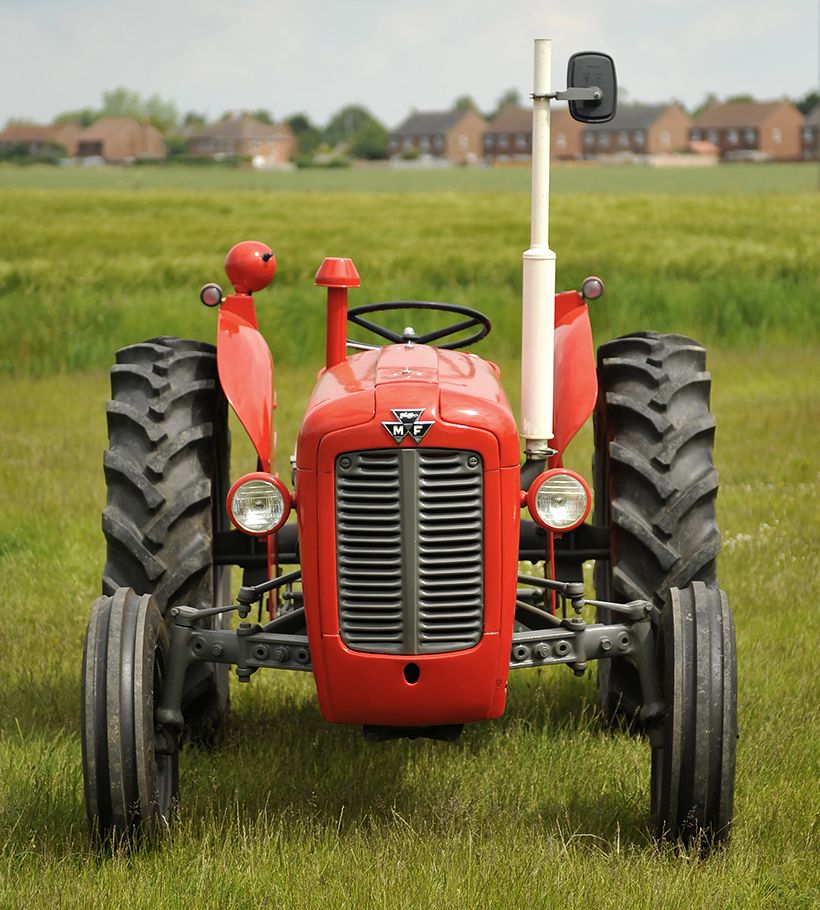
Lighting was an optional extra on the MF 35X. The famous, triple-triangle Massey Ferguson badge arrived with this model.
The next major development occurred in late 1962, when Massey Ferguson upgraded the MF 35, to create the 35X model. The big selling point for this model was more power from the diesel engine, which was boosted to 44hp at 2,250rpm. Customers also had the option of specifying a differential lock, and all but the earliest examples got safety mudguards, which extended down to fixings on the rectangular footplates. Also worth noting was the fact that Multi-Power became available as an option on dual-clutch 35Xs, doubling the number of gears (12 forward and four reverse), and giving the driver the ability to change ratios while on the move and under load. One other advantage for road use was that the top speed of a Multi-Power-equipped MF 35X was just over 22.5mph, compared to the standard model’s 16.4mph. Other options made available to MF 35X buyers included a full lighting set, a swinging drawbar, wheel weights, dual rear wheel kit and an automatic pick-up hitch.
Both the MF 35 and the 35X were good sellers for Massey Ferguson and, over a production life that spanned the nine years between 1956 and 1964, 387,381 left the Banner Lane factory.
Ownership matters
David Chapman has had more experience of working and running an MF 35X than most, having bought the example featured in the photographs here 56 years ago. It was the first tractor he owned and worked with him faithfully until it was retired just over 40 years later. To say that he knows the model inside out is an understatement, and the fact that he’s kept it for so long – and has no plans to change that situation – speaks volumes for the quality of the machine.
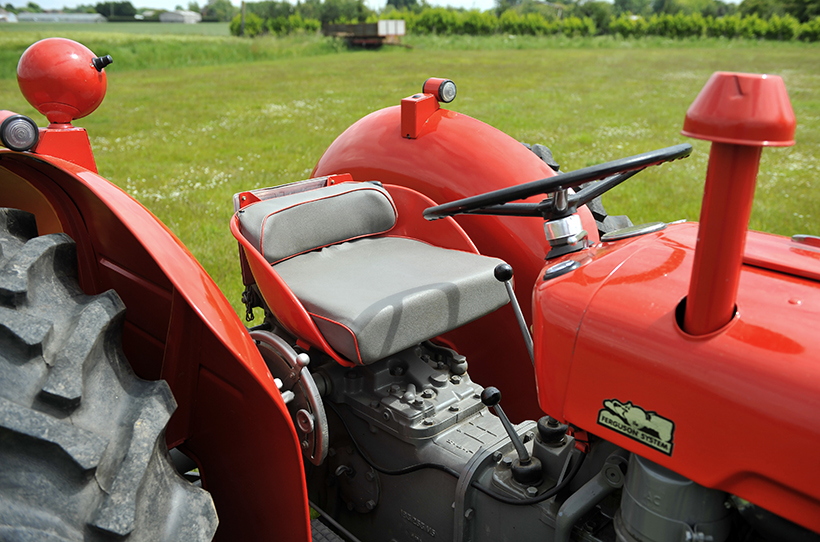
Seat padding was an optional extra. The seat itself can be hinged backwards, to prevent it filling with rain water.
“Both the MF 35 and the 35X were very good tractors,” he told me, “but I think that the later 35X was the stronger machine. Mine certainly served me very well for many years, and did everything we asked of it. As you know, 35X owners could specify the useful Multi-Power transmission and a differential lock, and the Perkins diesel engine produced more power than the 35. I bought my example from a farm sale, and it worked tirelessly as my frontline tractor for many years.”
From a desirability point of view, the MF 35 and 35X models have, over the years, become somewhat over-shadowed by the earlier TE-20 ‘Little Grey Fergie’ models and the later – and now immensely popular – MF 135. As a result, they don’t perhaps attract the level of attention they deserve. But that, of course, can work in their favour, from a buyer’s point of view. Without the same sort of popular clamour that’s often attached to the sale of grey Fergies and 135s, the 35s often fall under the radar at many auctions, meaning that there are bargains to be had.
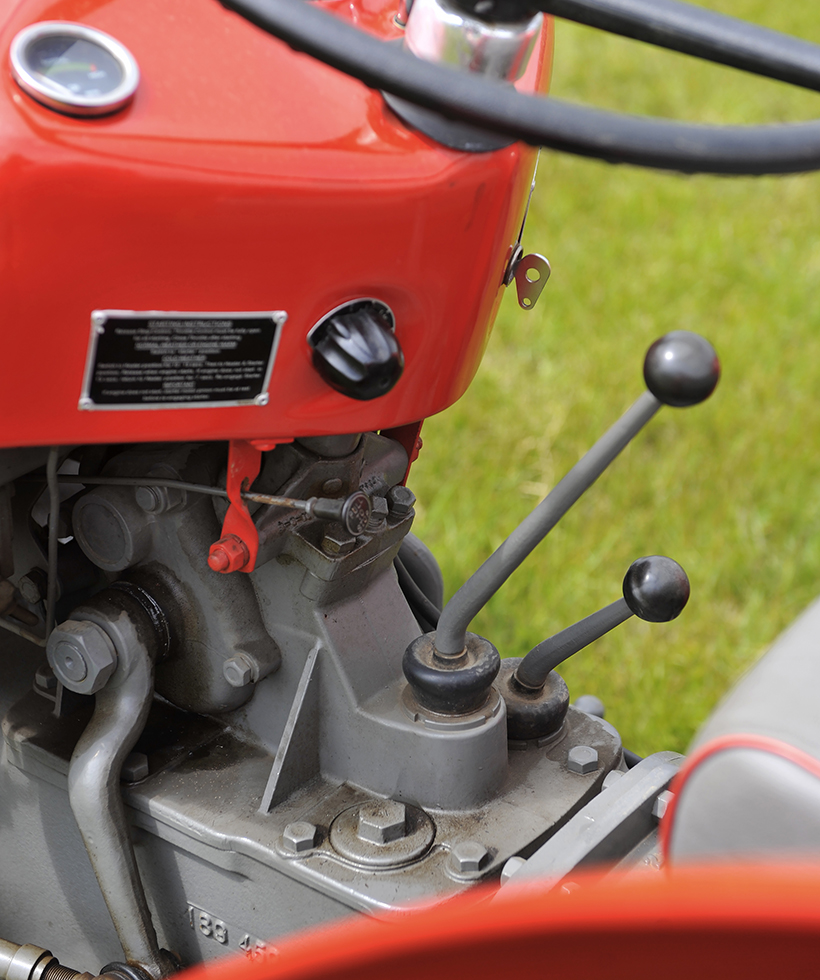
Multi-Power transmission – doubling the available ratios – was an option on the 35X, although David Chapman’s example isn’t fitted with it.
More good news for prospective buyers is that, mechanically speaking, there’s virtually nothing that can’t be dealt with on these models, according to David. He says that the parts supply situation is excellent and that the relative simplicity of the engineering involved means that everything is doable. Of course, as always, much depends on what sort of budget you have available for the project, and what your long term aims are for the tractor. Are you planning to produce a fully-restored, potential concours winner, or is your goal to halt the progress of any deterioration and thus preserve the tractor in an outward condition that reflects its age?
Originality counts
Given that most enthusiasts agree these days that originality is among the most desirable qualities, David’s first piece of advice to would-be buyers concerned the tinwork. “Do the bonnet and mudguards need replacing? Are they the originals or have they been replaced in the past?,” he said. “If the panelwork or mudguards are obviously damaged, is that damage repairable, or will the tinwork have to be scrapped? Replacement panels and mudguards are available nowadays from a number of sources, and most are reasonably accurate reproductions of the original; they’re quite accurately shaped and drilled, so can be bolted into place without too much bother,” he added.

Although other power options were available, it was the Perkins diesel-equipped tractors that quickly began to dominate sales. It’s a cracking engine, in all respects!
The same situation exists with regard to the engine, too. “Everything is repairable,” according to David, “and it really just depends how much you have to spend. If you have a decent budget set aside for a full engine rebuild, then the condition of the motor in the tractor you’re looking at is pretty much irrelevant. If, on the other hand, you’ll be spending most of your cash on buying the tractor in the first place, then it’s obviously better to get an example with an engine that isn’t smoking badly, visibly leaking oil and which is difficult to start. Overall, though, the Perkins three-cylinder diesel is a great engine that’ll run and run, assuming regular oil and filter changes, of course.”
Moving on to the transmission, David tells me that problems with gearboxes are rare, unless a tractor has been seriously abused during its working life. “Noisy gearboxes on this tractor are rare, as is selector wear. I’ve certainly not had any serious problems with the transmission on my 35X; the only thing I had to do was a wear-related clutch replacement. Even that’s not a major job, although it does involve splitting the tractor, of course,” he explained.
Fantastically reliable
“It’s a similar story for the back axle, the steering and the brakes,” David added. “All are reliable and long-lived, assuming the necessary, routine maintenance has been undertaken. Of course, the steering can take a pounding if the tractor has been used with a front loader, so check all linkages and joints for signs of wear if you suspect this has been the case.

The bonnet hinges forwards to provide decent access to the engine and battery, for routine maintenance.
“The electrical system used on these models was very straightforward, so there isn’t a lot to go wrong or cause problems, and I’m not aware of any characteristic, electrics-related failings to look out for. In many respects, this is a straightforward tractor to buy because there are no serious pitfalls to be avoided. Given that the parts situation is so good, and the design involved is so straightforward, it’s hard to imagine how anyone could make a serious mistake when buying an MF 35 or 35X. Perhaps the only mistake that lies in wait for the unwary is underestimating the cost of any work required. So it’s always important to go into ownership with your eyes open, and to be aware that money will need to be spent if jobs are to be done properly.”
Finally, in terms of whether the MF 35X is more desirable than the original 35, it’s horses for courses. While some owners will appreciate more power, the Multi-Power transmission and greater road speed potential of the 35X, others may prefer to live with the model in its purest form coupled with the relative mechanical simplicity of the standard transmission. Either way, there’s always a decent number of MF 35s to be found for sale in magazine classified sections, at specialist auctions and on internet sales sites, so there’s no excuse for not being able to find the machine that’s perfect for you and your needs.
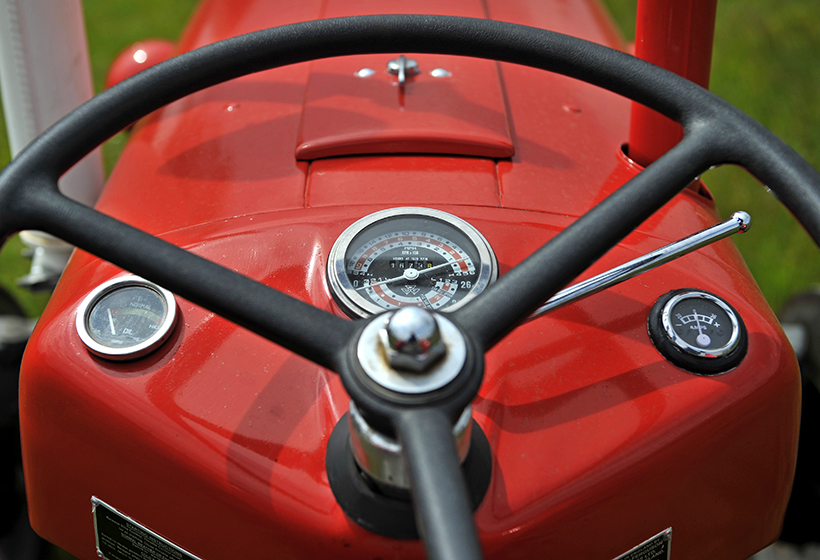
The dashboard was very simple, even on the uprated ‘X’ model. The central tractormeter is flanked by gauges showing oil pressure (left) and amps.
The MF 35/35X is a classic tractor that’s easy to live with, straightforward to handle and simple to maintain. It’s also a machine that’s perfectly towable behind a decent 4×4, meaning that taking one to shows, road runs or working days outside your local area isn’t a problem. As David Chapman can confirm, whether you opt for a 35 or the 35X, you’ll be buying yourself one of the best classic tractors around; a highlight of the Massey Ferguson range that, nowadays, far too many enthusiast overlook in favour of other older or newer models.
Owner’s view: David Chapman
“The MF 35X was the first tractor that I bought. Mine in a 1963 model that I bought from a farm sale in February, 1966, when I was in my early 20s. At that stage it had less than 1,000 hours on the clock and it cost me £425.
“It was my main tractor for a good while, and proved to be an excellent machine; both reliable and capable. I don’t remember it suffering with any serious mechanical issues whatsoever. We did fit a new clutch at some point, and the engine has been rebuilt more recently, but both of those were dictated by age and use, rather than mechanical failure.
“Initially it was used to drill sugar beet, onions and mustard then, in about 1970, it was fitted with a hydraulic front loader. It then spent most of its time for the next eight years filling a pair of Howard rotaspreaders with manure, which we used for contract muck-spreading. In 1978 it was fitted with a rear-mounted forklift, and confined to general yard duties, which it did for a further 29 years. In 2007 the MF 35X was finally retired, and sent off for a well-earned renovation by John Goldrup, who did an excellent job.
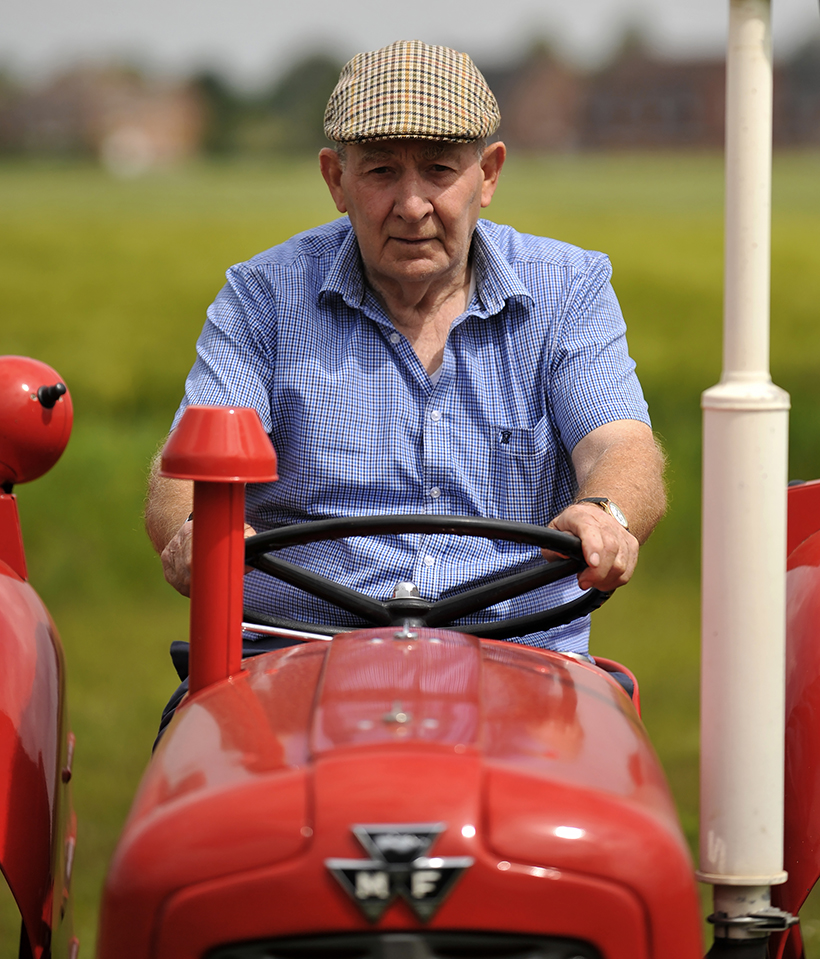
“I’ve always carried out my own routine servicing work on the tractor, such as changing the oil and filters, and made a point of following the manufacturer’s recommendations. But any bigger jobs were always farmed-out to the professionals. When it was retired it had about 10,000 hours on the clock and, as soon as the renovation was finished, I took it on the National Road Run which, that year, started from the Lincolnshire Showground.
“There was never any question of selling the tractor at the end of its working life; it had become one of the family, and I felt that it deserved to enjoy its retirement with us. I still take it to local shows and, most recently, was at the Carrington Steam & Heritage Show, here in Lincolnshire, with a potato planter on the back and a couple of boxes of seed potatoes. I also take part in road runs, on which it always performs very well.
“I’ve been very pleased with how well the tractor has kept its condition, following its refurbishment, which was completed 15 years ago. Of course, it doesn’t do much these days, and is kept undercover but, nevertheless, I think its condition is testament to the skill and time that John Goldrup put into the project for me, back in 2007.
“I really can’t think of any serious shortfalls that the MF 35X has as a tractor. While it was working it always did exactly what we needed it to do, and it did reliably. It was a good and very manageable tractor to drive and even now, 56 years after I bought it, I still get great pleasure from using it on road runs. It’ll cruise quite comfortably at 10-12mph, which is perfectly adequate for the sort of runs I go on these days.
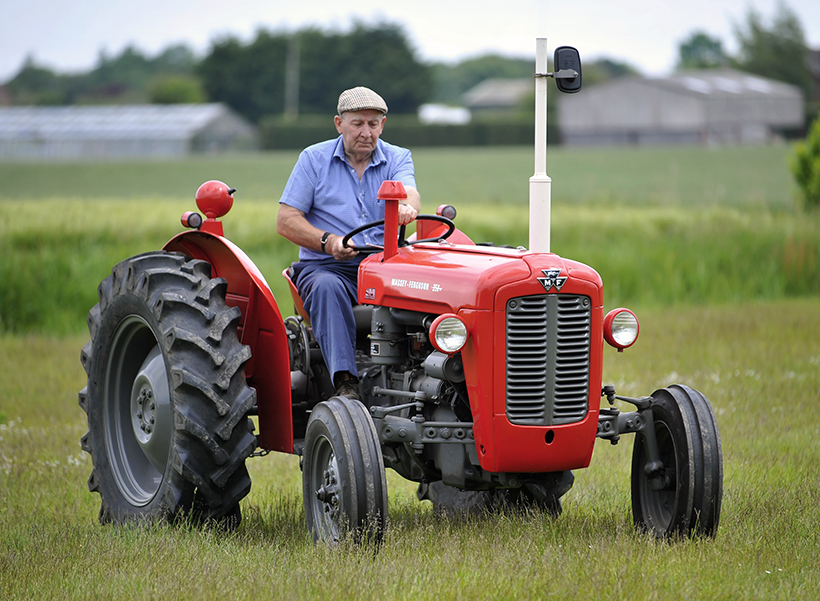
Both the original MF 35 and the uprated 35X that followed it are a joy to drive. They’re practical to own today, too.
“It’s a model that I’d be happy to recommend to anyone new to the hobby; the combination of diesel power and electric start make it easy to live with, and the engine itself is a little cracker!”
What to pay?
David says that for an entry-level machine nowadays you should expect to pay £2,000-£2,500 but that those at this end of the scale will vary enormously in condition and money will always need to be spent on them.
Mid-range, presentable examples can be bought for between £7,000 and £9,000 while, at the top end of the market, the best around are likely to fetch £12,000+.
There doesn’t seem to be terribly much difference in the like-for-like prices being paid for 35 and 35X models, but those with Multi-Power do seem to command a premium. The more unusual models, such as vineyard and Industrial versions, tend to be worth more, too.
This feature comes from the latest issue of Classic Massey & Ferguson Enthusiast, and you can get a money-saving subscription to this magazine simply by clicking HERE



